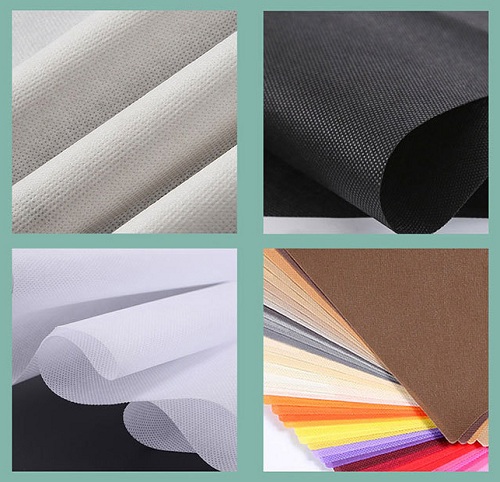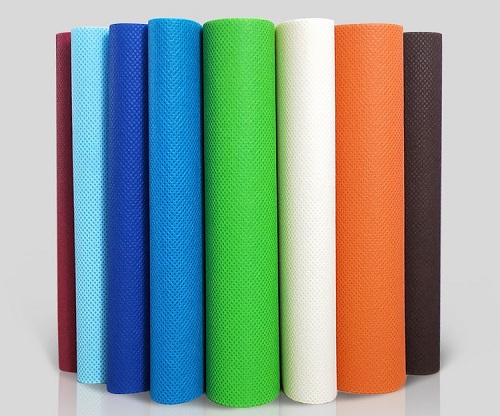Nonwoven material as
An important part of the Chinese textile industry
Is innovation and development
One of the more active areas
Development Status of Nonwovens in China
China is a major producer and consumer of nonwovens in the world. In 2018, the global production of non-woven fabrics was about 15.65 million tons, and China accounted for about 37.9% of the total global nonwovens production.
The total production of non-woven fabrics in China increased from 3.61 million tons in 2014 to 5.93 million tons in 2018, with an average growth rate of 13.2%.
The main production techniques of nonwoven fabrics include spunbonding, meltblowing, hot rolling, needle punching, chemical bonding and spunbond meltblown (SMS). Compared with traditional dry-laid nonwoven processing technology, spunbonded nonwovens eliminate the cumbersome intermediate processes such as fiber crimping, packaging, shipping and carding, so they can be continuously mass-produced and occupied in the nonwovens market. The rate is higher.

According to the statistics of the Industrial Textiles Industry Association, the total capacity of China's spunbond and meltblown nonwovens in 2017 was 4.2 million tons, up 5.5% year-on-year; the actual output was 2.87 million tons, up 5.7% year-on-year. 1412 spunbonded nonwovens production lines, including 1185 PP spunbonded nonwovens production lines, 118 PET spunbonded nonwovens production lines, 109 online SMS nonwovens production lines, continuous meltblown nonwovens There are 138 cloth production lines. In 2018, the total output of spunbond and meltblown nonwovens was 3.02 million tons, up 5.4% year-on-year. There were 65 new spunbond production lines, of which SSS and SMS online composite production lines increased by nearly 13%.
Specific to the variety, PET spunbonded nonwovens developed faster than PP spunbonded nonwovens. In 2016, the output of PP spunbonded non-woven fabrics was 1.000 million tons, an increase of 768,000 tons over 2010, with an average growth rate of 9.0%. The output of PET spunbonded nonwovens was 295,000 tons, an increase of 203,000 tons over 2010, an average increase. The rate is 21.4%.
The high-speed development of the PET spunbond nonwovens industry is mainly due to the following reasons
First, PET spunbonded nonwoven fabric has high strength, high temperature resistance (long-term use in 150 ° C environment), aging resistance, UV resistance, high elongation, stability and permeability, corrosion resistance, sound insulation , anti-mite, non-toxic and other characteristics.
PET spunbonded nonwovens have very specific physical properties: anti-gamma rays. Applied to medical products, it can be directly sterilized with gamma rays without damaging its physical properties and dimensional stability. This is the physical property that PP spunbonded nonwovens do not have.
Second, the development of modern building methods such as continuous flat roofs and lightweight structures with an increasing domestic area has increased the quality requirements for roofing waterproofing layers. The polyester spunbonded needle-punched nonwoven fabric is used as a tire base and matched with APP and SBS modified asphalt to produce high-quality waterproof coiled material, which brings huge market space.
Third, the country's efforts to increase environmental management have increased the demand for air filtration, water filtration, and chemical filtration, prompting PET spunbond nonwovens production plants to increase market supply and become the driving force for PET filter growth.

The nonwovens industry has been constantly adapting to market and policy needs
In the next few years, it is likely that a series of new products with sustainable development capabilities will replace traditional textiles and traditional craft nonwoven products on a large scale.
A biodegradable nonwoven fabric is an environmentally friendly material that is placed in a natural environment and slowly decomposes and disappears under the action of microorganisms.
on the one hand
It uses pure natural sources of raw materials, viscose fiber, cotton, bamboo fiber, lyocell fiber and blended. For example, the use of degradable bio-fiber agricultural non-woven fabrics to replace plastic film for cotton planting, reduce impurities in cotton, and improve the quality of domestic cotton.
on the other hand
Bio-based polymers (such as polylactic acid PLA, polyhydroxyalkanoate PHA, polyhydroxybutyrate PHB, etc.) are used instead of petroleum polymer fiber products to meet the requirements of national EPR systems.
Ruize masterbatch, professional non-general
We specialize in the production of masterbatch for nonwovens
Adhering to the spirit of ingenuity
Pursuit of excellence
Climbing the industry peak

Yancheng Ruize Masterbatch Co., Ltd. mainly produces and operates: Polyester masterbatch, Non-woven masterbatch, Non-woven antibacterial masterbatch,antistatic masterbatch, polypropylene filament masterbatch, Polypropylene filament masterbatch, Polyester masterbatch, polypropylene spunbond non-woven masterbatch, Polypropylene fiber masterbatch, chemical masterbatch, polypropylene masterbatch, Polyester masterbatch, Soft hydrophilic masterbatch.
- Mizlion made a stunning appearan
- Why is it said that polypropylen
- The impact of the Federal Reserv
- Chemical fibers "carry static el
- What are the core considerations
- The High Performance and High Fu
- At the end of the year, a new ch
- Exhibition Invitation: Ruize Mas
- Ruize Masterbatch congratulates

